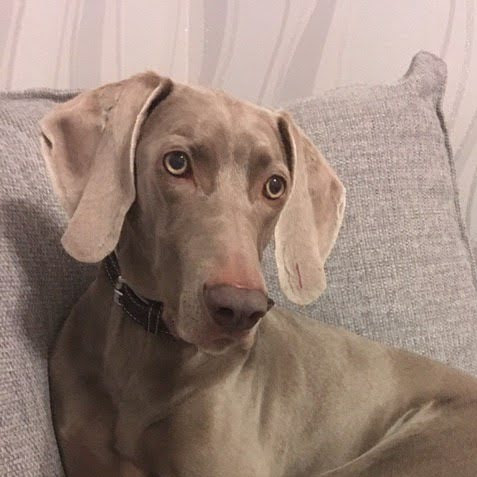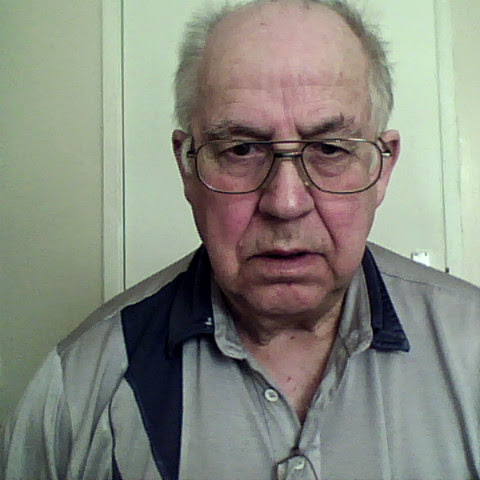Alexander Q Simpson
age ~58
from Los Angeles, CA
- Also known as:
-
- Simpson Alexander
- Alex Simpson
Alexander Simpson Phones & Addresses
- Los Angeles, CA
- Albuquerque, NM
- Marina del Rey, CA
- Portland, OR
- Grosse Ile, MI
- Santa Monica, CA
Education
-
Degree:J.D.
-
School / High School:Duke University School of Law
Ranks
-
Licence:New York - Currently registered
-
Date:1994
Specialities
Government Contracts • Government • Antitrust / Trade Law
Resumes

Independent Research Professional
view sourceLocation:
Orange County, California Area
Industry:
Research

Independent Mental Health Care Professional
view sourceLocation:
United States
Industry:
Mental Health Care

Wine And Spirits Professional
view sourceLocation:
Greater Los Angeles Area
Industry:
Wine and Spirits

Student At Saddleback College
view sourceLocation:
Orange County, California Area
Industry:
Religious Institutions
Lawyers & Attorneys

Alexander Grant Simpson - Lawyer
view sourceAddress:
A
Licenses:
New York - Currently registered 1994
Experience:
Vice President & General Counsel at Reis, Inc. - 2007-present
Owner/Principal at Alex Simpson PLLC - 2005-2008
Partner at King & Spalding LLP - 2002-2004
Associate at Davis Polk & Wardwell - 1993-2002
Owner/Principal at Alex Simpson PLLC - 2005-2008
Partner at King & Spalding LLP - 2002-2004
Associate at Davis Polk & Wardwell - 1993-2002
Education:
Duke University School of Law
Degree - J.D.
Graduated - 1993
Dartmouth College
Degree - B.A. - Government
Graduated - 1989
Degree - J.D.
Graduated - 1993
Dartmouth College
Degree - B.A. - Government
Graduated - 1989
Specialties:
Business - 100%, 31 years

Alexander Simpson - Lawyer
view sourceSpecialties:
Government Contracts
Government
Antitrust / Trade Law
Government
Antitrust / Trade Law
ISLN:
923282454
Admitted:
2010
Law School:
University of Maryland School of Law, JD
Isbn (Books And Publications)

Name / Title
Company / Classification
Phones & Addresses
President
Who Face Production Inc
Motion Picture/Video Production
Motion Picture/Video Production
23030 Blue Bird Dr, Calabasas, CA 91302
President
WHO FACE PRODUCTIONS, INC
5741 Briarcliff Rd, Los Angeles, CA 90068
22156 Dardenne St, Calabasas, CA 91302
22156 Dardenne St, Calabasas, CA 91302
Principal
Whoface Productions
Motion Picture/Video Production
Motion Picture/Video Production
12940 Hesby St, Van Nuys, CA 91423
Us Patents
-
Method Of Fabricating A Polishing Pad With An End-Point Detection Region For Eddy Current End-Point Detection
view source -
US Patent:8439994, May 14, 2013
-
Filed:Sep 30, 2010
-
Appl. No.:12/895529
-
Inventors:William C. Allison - Beaverton OR, US
Diane Scott - Portland OR, US
Ping Huang - Eden Prairie MN, US
Richard Frentzel - Murrieta CA, US
Alexander William Simpson - Hillsboro OR, US -
Assignee:NexPlanar Corporation - Hillsboro OR
-
International Classification:B24D 11/00
B24D 3/00
B24D 18/00 -
US Classification:51293, 451537
-
Abstract:Methods of fabricating polishing pads with end-point detection regions for polishing semiconductor substrates using eddy current end-point detection are described.
-
Polishing Pad For Eddy Current End-Point Detection
view source -
US Patent:8628384, Jan 14, 2014
-
Filed:Sep 30, 2010
-
Appl. No.:12/895465
-
Inventors:William C. Allison - Beaverton OR, US
Diane Scott - Portland OR, US
Ping Huang - Eden Prairie MN, US
Richard Frentzel - Murrieta CA, US
Alexander William Simpson - Hillsboro OR, US -
Assignee:NexPlanar Corporation - Hillsboro OR
-
International Classification:B24D 3/28
-
US Classification:451526, 451528, 451921, 451 6, 451287
-
Abstract:Polishing pads for polishing semiconductor substrates using eddy current end-point detection are described. Methods of fabricating polishing pads for polishing semiconductor substrates using eddy current end-point detection are also described.
-
Homogeneous Polishing Pad For Eddy Current End-Point Detection
view source -
US Patent:20120083192, Apr 5, 2012
-
Filed:Sep 30, 2010
-
Appl. No.:12/895479
-
Inventors:William C. Allison - Beaverton OR, US
Diane Scott - Portland OR, US
Ping Huang - Eden Prairie MN, US
Richard Frentzel - Murrieta CA, US
Alexander William Simpson - Hillsboro OR, US -
International Classification:B24D 11/00
B24D 3/20
B24D 18/00 -
US Classification:451526, 51293, 51296
-
Abstract:Homogeneous polishing pads for polishing semiconductor substrates using eddy current end-point detection are described. Methods of fabricating homogeneous polishing pads for polishing semiconductor substrates using eddy current end-point detection are also described.
-
Polishing Pad With Concentric Or Approximately Concentric Polygon Groove Pattern
view source -
US Patent:20120190281, Jul 26, 2012
-
Filed:Jan 26, 2011
-
Appl. No.:13/014630
-
Inventors:William C. Allison - Beaverton OR, US
Diane Scott - Portland OR, US
Alexander William Simpson - Hillsboro OR, US -
International Classification:B24D 11/00
B24D 13/14
B24D 18/00 -
US Classification:451527, 51298, 51296
-
Abstract:Polishing pads with concentric or approximately concentric polygon groove patterns are described. Methods of fabricating polishing pads with concentric or approximately concentric polygon groove patterns are also described.
-
Polishing Pad With Foundation Layer And Polishing Surface Layer
view source -
US Patent:20130137350, May 30, 2013
-
Filed:Nov 29, 2011
-
Appl. No.:13/306845
-
Inventors:William C. Allison - Beaverton OR, US
Diane Scott - Portland OR, US
Paul Andre Lefevre - Portland OR, US
James P. LaCasse - Portland OR, US
Alexander William Simpson - Hillsboro OR, US -
International Classification:B24D 7/00
B24D 18/00
B24D 11/00 -
US Classification:451539, 451550, 51298, 51296
-
Abstract:Polishing pads with foundation layers and polishing surface layers are described. In an example, a polishing pad for polishing a substrate includes a foundation layer. A polishing surface layer is bonded to the foundation layer. Methods of fabricating polishing pads with a polishing surface layer bonded to a foundation layer are also described.
-
Polishing Pad With Polishing Surface Layer Having An Aperture Or Opening Above A Transparent Foundation Layer
view source -
US Patent:20130324020, Dec 5, 2013
-
Filed:Jun 4, 2012
-
Appl. No.:13/488149
-
Inventors:Paul Andre Lefevre - Portland OR, US
William C. Allison - Beaverton OR, US
James P. LaCasse - Portland OR, US
Diane Scott - Portland OR, US
Alexander William Simpson - Hillsboro OR, US
Ping Huang - Beaverton OR, US
Leslie M. Charns - Portland OR, US -
International Classification:B24D 11/00
B24D 18/00 -
US Classification:451529, 451527, 51298, 51296
-
Abstract:Polishing pads with a polishing surface layer having an aperture or opening above a transparent foundation layer are described. In an example, a polishing pad for polishing a substrate includes a foundation layer having a global top surface and a transparent region. A polishing surface layer is attached to the global top surface of the foundation layer. The polishing surface layer has a polishing surface and a back surface. An aperture is disposed in the polishing pad from the back surface through to the polishing surface of the polishing surface layer, and aligned with the transparent region of the foundation layer. The foundation layer provides an impermeable seal for the aperture at the back surface of the polishing surface layer. Methods of fabricating such polishing pads are also described.
-
Polishing Pad Having Polishing Surface With Continuous Protrusions
view source -
US Patent:20170203409, Jul 20, 2017
-
Filed:Apr 5, 2017
-
Appl. No.:15/479779
-
Inventors:- Hillsboro OR, US
William C. ALLISON - Beaverton OR, US
Alexander William SIMPSON - Hillsboro OR, US
Diane SCOTT - Portland OR, US
Ping HUANG - Beaverton OR, US
Leslie M. CHARNS - Portland OR, US
James Richard RINEHART - Portland OR, US
Robert KERPRICH - Portland OR, US -
International Classification:B24B 37/26
B24B 37/22 -
Abstract:Polishing pads having a polishing surface with continuous protrusions are described. Methods of fabricating polishing pads having a polishing surface with continuous protrusions are also described.
-
Polishing Pad With Concentric Or Approximately Concentric Polygon Groove Pattern
view source -
US Patent:20160023322, Jan 28, 2016
-
Filed:Oct 5, 2015
-
Appl. No.:14/875513
-
Inventors:William C. Allison - Beaverton OR, US
Diane Scott - Portland OR, US
Alexander William Simpson - Hillsboro OR, US -
International Classification:B24B 37/26
B24D 11/00 -
Abstract:Polishing pads with concentric or approximately concentric polygon groove patterns are described. Methods of fabricating polishing pads with concentric or approximately concentric polygon groove patterns are also described.
Plaxo

Alexander Simpson
view sourceLondon, UK

Rita Simpson Alexander
view sourceVice President of Human Resources and Communicatio...
Classmates

Alexander Simpson
view sourceSchools:
West Tallahatchie High School Webb MS 1953-1957
Community:
Eliza Polk, Gail Grace, Deloris Allen

Roy Simpson, Alexander Sc...
view sourceYoutube
Myspace
Googleplus

Alexander Simpson
Work:
Government

Alexander Simpson
Education:
University of Minnesota

Alexander Simpson

Alexander Simpson
Relationship:
Single

Alexander Simpson

Alexander Simpson

Alexander Simpson

Alexander Simpson

Alexander Keano Simpson
view source
Alexander James Simpson
view source
Alexander H Simpson
view source
Alexander Simpson
view source
Alexander Joseph Simpson
view source
Alexander Simpson
view source
Alexander Simpson
view source
Alexander Simpson
view sourceFlickr
Get Report for Alexander Q Simpson from Los Angeles, CA, age ~58
















